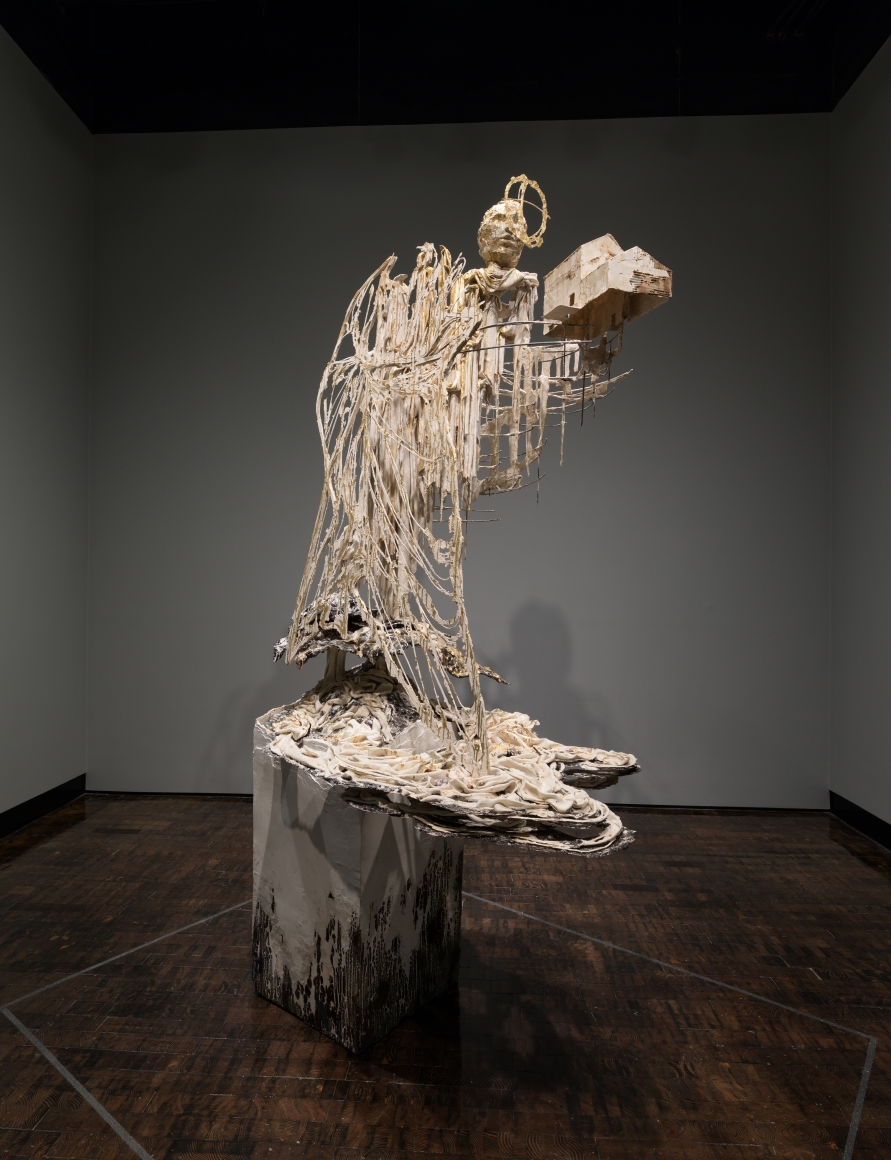
The brutal paintings of Cleon Peterson (covered here) have a visceral effect on the viewer, plunging them deeply into a world of chaos, ruin and violence. On August 29th, Peterson brings his iconic style to Detroit’s Library Street Collective for his latest exhibition, “Poison.” “The show is about revenge, which is a current of poison running through our culture and other cultures around the world.” Peterson shares. “It’s often a motivation for war and a justification for punishment. It is a social impulse that is destructive and easy to be complicit in.” Peterson is deliberate in his unflinching presentation of the darker side of human nature. In this world, muscle-headed brutes cross swords and knives, locked in a cycle of aggression.

In addition to his collection of acrylic paintings, “Poison” also features porcelain sculptures, including “The Marcher,” a large golden statute of one of Peterson’s characters, which acts as an extension of his painted work, made with the same style and themes. Peterson says a lot with a little, rendering the isometric figures in a simple black and white. The stark contrast between makes the paintings seem even more bold. Though his pieces carry an ancient, primal feel, their commentary is still heavily relevant to modern society and violence that is repeatedly reinforced. “Everything I do is a reaction to the world we live in. I’m always thinking about what’s going on inside and outside of our country, between race, power and religion. I think there are huge problems in the world that have been going on forever and people have good reasons to be angry and seek change,” he says.









 Diana Al-Hadid’s ghostly sculptures, which take influence from historical architecture, mythology, and beyond, are currently inhabiting both a gallery at Frist Art Museum and outdoor gardens at Cheekwood in concurrent exhibitions in Nashville. “Subliminations” collects varying types of work from the artist, with both figurative sculpture and wall reliefs. Above and below interior photos are by John Schweikert.
Diana Al-Hadid’s ghostly sculptures, which take influence from historical architecture, mythology, and beyond, are currently inhabiting both a gallery at Frist Art Museum and outdoor gardens at Cheekwood in concurrent exhibitions in Nashville. “Subliminations” collects varying types of work from the artist, with both figurative sculpture and wall reliefs. Above and below interior photos are by John Schweikert. Belgium based figurative painter
Belgium based figurative painter  In the imagination of
In the imagination of  Inside an old warehouse of a paper strip manufacturing plant owned and formerly operated by her family,
Inside an old warehouse of a paper strip manufacturing plant owned and formerly operated by her family,